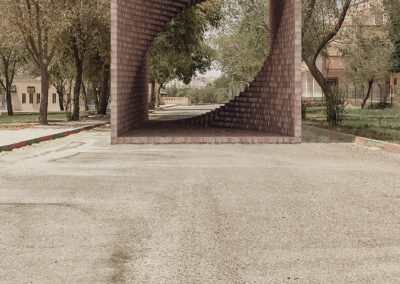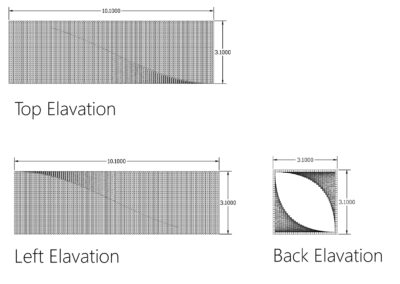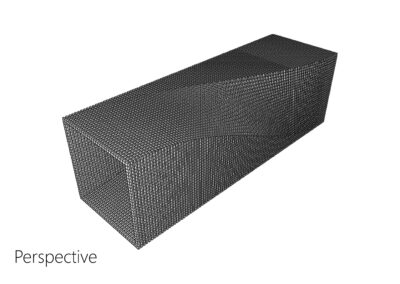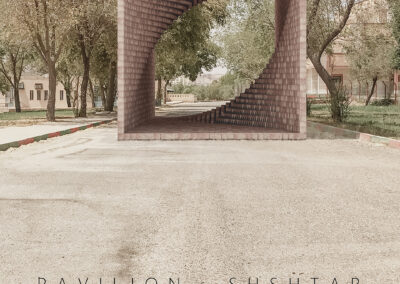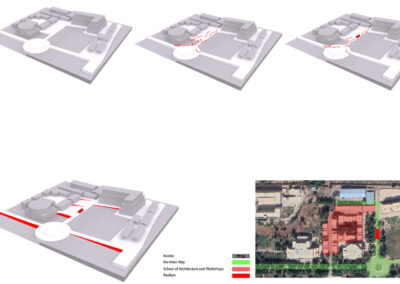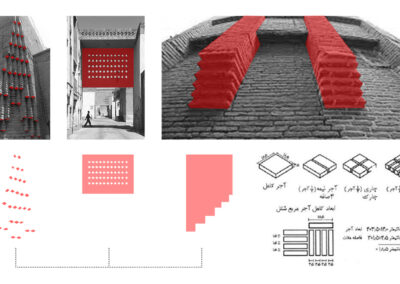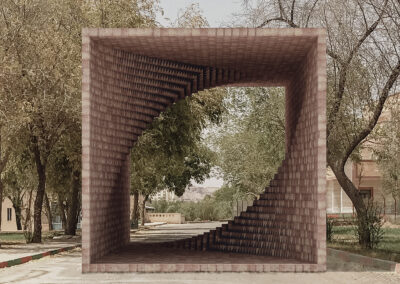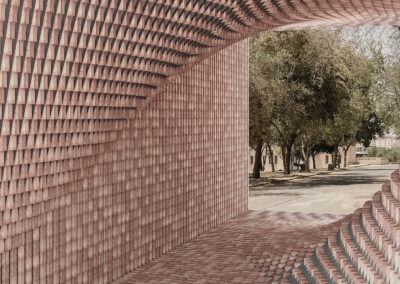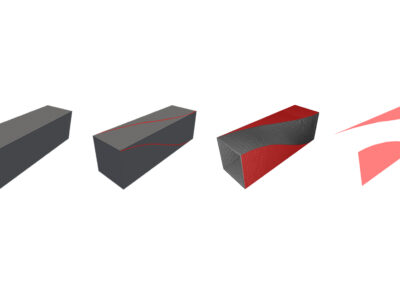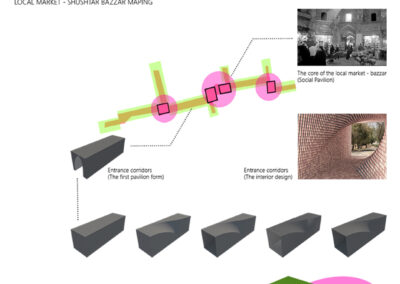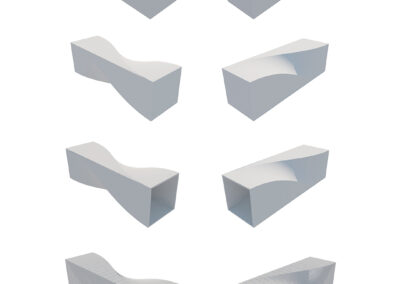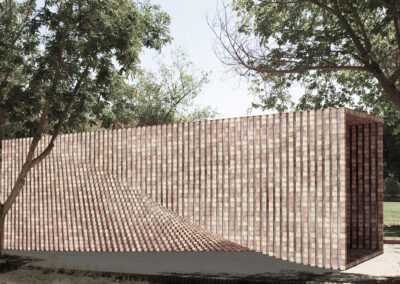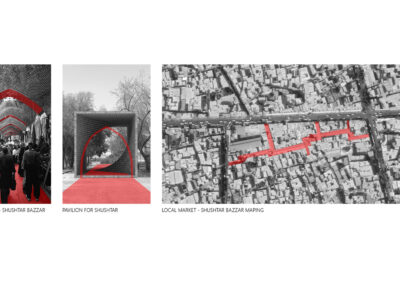Type
Public Space
Date
2019
Location
Shushtar, Khuzestan, Iran
Status
Conceptual
Pavillion for Shushtar


Gathered Space
Communication of structure and space is fair to assess the art deservation of that structure
Gathered space also can be seen more than the physical side. also both understandable and enable to reach by cultural effect and historical ancestors. it has a powerful relationship and gathering with the social culture of society during the times and centuries
Nested corridors in Iranian Islamic architecture are available to reach the people from the lower places to other places like bazaars and markets, it can be seen as an able sign of gathering spaces. The corridors made such fantastic ways to join the people and markets and also reach to traditional cores of cities. these corridors instance in shushtar we can see they’re plugged by(dislinked or sabbats) will finish to the traditional core. these cores (via link centers) all people connected.

How did this idea happen in my brain?
Maybe the main reason for this idea in shushtar college in the first step keeping the shushtar historical atmosphere and the second goal was making some relationship between architecture students and the other students. in theory field we tried to develop all the needs of shushtar architecture in this days. the main form can prove our claim by traditional bricks.
But the main reason for our concept was to show some architecture students when he or she comes into this major and they spent a difficult and sweet way. at last and the end of this way there is a person who can release his or her society from routine life and skeletal shape
A raw rectangular cube forms the site’s topology in the main form. The raw rectangular cube form begins to rotate with a 90-degree rotation and forms a spiral-like volume. Like the spear arches (which can be seen from the half-face view) on the inner profile and creates a bend on the outer face. The presence and use of brick as the main material of the structure itself evokes a sense of adherence to the brick structure. Buildings of great antiquity have unfortunately encountered an influx of unstable urban structures in recent years. These structures, which are brick, are the cornerstone and the main texture of the city, whose demolition damages the identity of the city. The structure of Shushtar Pavilion is the result of a combination of brick models in also in Khuzestan are used.


In general, the structure consists of 101 metal frames that form the overall structure of the work. It is mounted on these 101 frames of 10 * 10 * 5 pieces of brick (without mortar). Trim frames are connected one after the other and, at the end of the work, are restrained by traction cables and then connected to the ground via the pedestal of the entire structure.Each Louvre is made up of several 5 * 5 cans that are welded at a certain angle (rolling) and, once completed, form 101 skeletal structures. The bricks are all 5 * 5 * 10 and are of refractory type (brick). The middle of each brick is 2.5 mm in diameter and 2.5 cm long and is placed in a dry and non-mortar manner.

